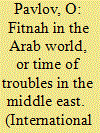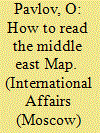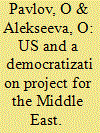| Srl | Item |
| 1 |
ID:
111933


|
|
|
|
|
| Publication |
2012.
|
| Summary/Abstract |
NEARLY A YEAR HAS ELAPSED since the beginning of the Arab Spring; time has come to assess the preliminary results of the massive landslide started on a December day in 2010 by Mohamed Bouazizi, street vendor, who set himself on fire in a Tunis suburb to protest against police harassment and unemployment. This small stone set events in motion.
One after another the seemingly unshakable political regimes on the "Arab continent" were wiped out: two political doyens - Hosni Mubarak and Muammar Qaddafi - lost their "thrones"; President of Tunisia Zine El Abidine Ben Ali fled the country. Muammar Qaddafi lost even more than the throne - he lost nearly all his children and was shot through the head. Today when I am writing this article President of Yemen Ali Abdallah Saleh has come to the brink of resignation; King of Bahrain Khalifa still rules under pressure; the same can be said of President of Syria Bashar Assad. Reforms in Jordan are barely dragging on
|
|
|
|
|
|
|
|
|
|
|
|
|
|
|
|
| 2 |
ID:
088141


|
|
|
|
|
| Publication |
2009.
|
| Summary/Abstract |
THE ARAB-ISRAELI CONFLICT In the Middle East has been one of the most sensitive international political issues for the past 60 years. Looking back over the years, one cannot help recognizing that during this period the Middle East, like a train running at full speed, has not once been on the verge of war, but at the same time it has also passed the stations called "Peace" without stopping.
There are many reasons for that, and it would not be much of an exaggeration to say that mountains of books have been written on the subject by now. By the early 1990s, the majority of analysts and participants in the events agreed in that one of the most serious external impediments to the process of ending the Arab-Israeli confrontation - i.e., the Cold War - was over, and the traffic lights on the road to peace had turned green. Reality, however, proved to be far harsher and grimmer. Since then the region has at least twice been on the edge or even over the edge of new wars and man-made disasters, drinking from the cup of hostility, not friendship.
Without delving too far into history, I would like to consider briefly the stages that the Middle East has gone through since the end of the Cold War (the Cold War period is a special subject), and why peace is still elusive.
|
|
|
|
|
|
|
|
|
|
|
|
|
|
|
|
| 3 |
ID:
078903


|
|
|